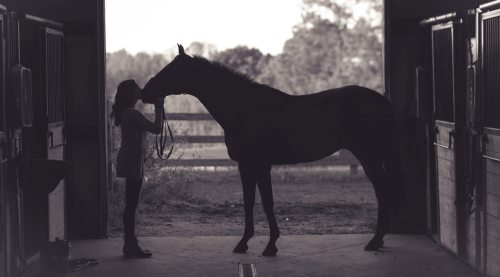
Stabling in the winter
Lisa Kiley – December 2019
Originally published in Horsemen’s Corral Magazine – link to magazine
With the winter upon us, it often means more stall time for our horses during colder days and inclement weather. Some horses love their stalls, while others are not as excited about being confined in a space. Either way, there are things that you can do as an owner to make their space inviting and comfortable:

Ventilation
When it’s cold out, it is instinctual to want to close the barn tight to keep it as warm inside as possible, but when it comes to respiratory health of your horse, it can be detrimental. Dust, horse waste in the stall & even hay can contribute to respiratory issues. The best ventilation will allow the stale are to escape the barn without causing a draft. Ventilation strips under the eaves are a great option along with a ridge line down the center of the barn roof. Stall walls with bars will also maximize ventilation within the barn. It is still important for horses to get out into the fresh air via turn out or hand walking daily.

Stall Size
Horses need to be able to move around freely and laydown in their stalls without fear of getting cast. Most average horses do well in stall sizes of 12×12. Smaller equines can be comfortable in 12×10 or 10×10 stalls. If you have larger horses or a horse that primarily lives in the stall you may want to consider 14’ or 16’ options.

Stall Floor
Mats are a great option any time of year, but in the winter having a base under your mats that allows for drainage and helps keep the floor level will make cleaning stalls easier. It is very important to clean stalls daily and make sure that they are thoroughly cleaned to avoid ammonia odors and help keep the stall dry. Bedding will also add a layer of warmth and absorption under foot. Kiln dried bedding that is 100% pine is going to have the best absorbency. There are also stall additives that can be used to help control odor.

Fresh Water
Providing plenty of water for your horse is essential. In the winter it is critical that you have a way to keep the water from freezing. A thermal bucket is a great way to keep your water from freezing without needing electricity. Heated buckets or tank heaters can keep water from freezing, but it is important that safety considerations are made when using electrical products in a barn.

Feeding for Warmth
When feeding your horse in the winter, you may want to increase forage as temperatures drop. Sometimes a shaggy coat or blanket can hide changes in weight, so make sure to check your horse often. Because the stall restricts the natural grazing nature of the horse, slow feed hay nets or stall floor feeders for hay can slow a horse down and mimic grazing. Feeding smaller quantities more frequently is also preferred to a twice daily feeding schedule. Implementing these practices will aid a horse’s digestion and help negate boredom.

Enrichment
Providing toys, snacks & treats that engage your horse in the stall are a great way to curb boredom that can sometime stem into behavior issues. Horses are social creatures and herd animals by nature. If they can see their neighbors in the barn or hang their head out of the stall, it can help relieve some anxiety for them. It is always important to make sure that you are pairing horses that get along next to each other. Most importantly, your horse still needs to get out and exercised. If you don’t have a place where you can ride or turn out regularly, try hand walking and ground-work exercises.
Cashmans Helpful Resources
Recommended For You
-
-
Stable Ground Mud Solution
$17.50











